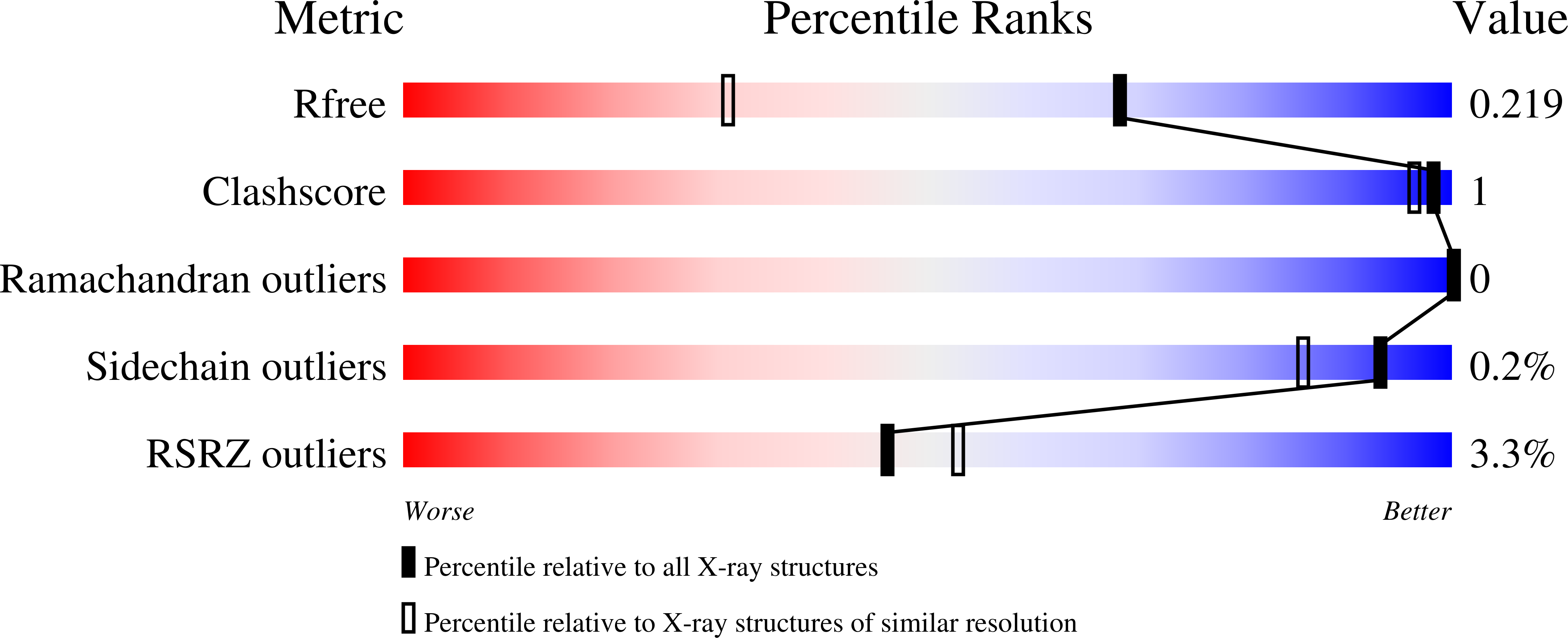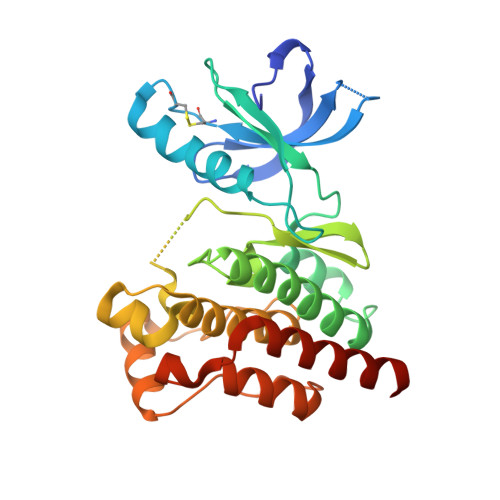Structure-kinetic relationship reveals the mechanism of selectivity of FAK inhibitors over PYK2.
Berger, B.T., Amaral, M., Kokh, D.B., Nunes-Alves, A., Musil, D., Heinrich, T., Schroder, M., Neil, R., Wang, J., Navratilova, I., Bomke, J., Elkins, J.M., Muller, S., Frech, M., Wade, R.C., Knapp, S.(2021) Cell Chem Biol 28: 686
- PubMed: 33497606
- DOI: https://doi.org/10.1016/j.chembiol.2021.01.003
- Primary Citation of Related Structures:
6YOJ, 6YQ1, 6YR9, 6YT6, 6YVS, 6YVY, 6YXV - PubMed Abstract:
There is increasing evidence of a significant correlation between prolonged drug-target residence time and increased drug efficacy. Here, we report a structural rationale for kinetic selectivity between two closely related kinases: focal adhesion kinase (FAK) and proline-rich tyrosine kinase 2 (PYK2). We found that slowly dissociating FAK inhibitors induce helical structure at the DFG motif of FAK but not PYK2. Binding kinetic data, high-resolution structures and mutagenesis data support the role of hydrophobic interactions of inhibitors with the DFG-helical region, providing a structural rationale for slow dissociation rates from FAK and kinetic selectivity over PYK2. Our experimental data correlate well with computed relative residence times from molecular simulations, supporting a feasible strategy for rationally optimizing ligand residence times. We suggest that the interplay between the protein structural mobility and ligand-induced effects is a key regulator of the kinetic selectivity of inhibitors of FAK versus PYK2.
Organizational Affiliation:
Structural Genomics Consortium, Goethe University Frankfurt, Buchmann Institute for Molecular Life Sciences, Max-von-Laue-Stra?e 15, 60438 Frankfurt am Main, Germany; Institute of Pharmaceutical Chemistry, Goethe University Frankfurt, Buchmann Institute for Molecular Life Sciences, Max-von-Laue-Stra?e 9, 60438 Frankfurt am Main, Germany.
















